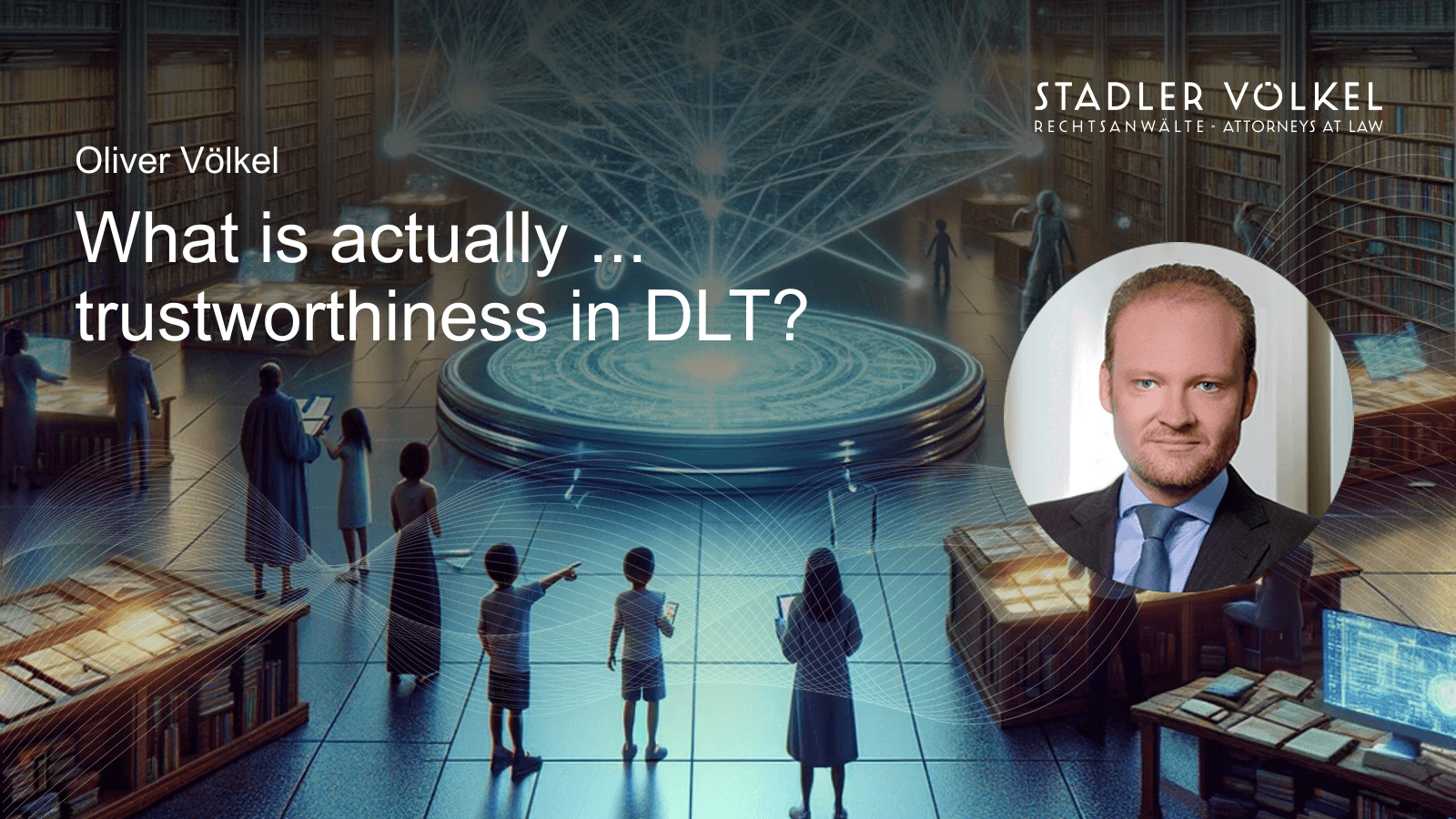
In this series "What is actually ...?", Oliver Völkel explains various terms and concepts relating to blockchain and distributed ledger technology (DLT). This article is dedicated to another fundamental concept, namely trustworthiness of public DLT.
Public blockchains are regularly referred to as trustworthy. In fact, this trustworthiness also has an essential meaning in our legal practice, which is why a better understanding is important. In common parlance, trust is the firm belief in the reliability or dependability of a person or thing. However, blockchain technology is characterized by the fact that trust in other people should not be necessary. Instead, trust is placed in the decentralized technology. The fact that trust relates to the underlying technology is also made clear by the Token and Trustworthy Technology Service Provider Act (TVTG) from Liechtenstein, which is intended to form a legal basis for "trustworthy technologies".
As discussed in this series’ article What is actually... decentralization in DLT?, the blockchain is a series of blocks of transaction data. A unique check sum, known as a hash, can be calculated for each block. This check sum depends on the exact content of the block and changes with it. If, for example, a transaction is removed or changed (e.g., two coins are to be transferred from A to B instead of one), this changes the check sum of the block. The check sum is saved as a separate data record in the subsequent block. In this way, each block is linked to the previous and subsequent blocks.
If someone wants to make a change in the transaction history—e.g., delete or change a transaction from the blockchain—because of this link it would not be sufficient to manipulate only the block in which the transaction itself was recorded. This would give the block a new check sum. And since the correct sum can be read in the successor block, the manipulation would be noticed immediately. For an attempt at deception to succeed, the check sum stored in the successor block would also have to be manipulated. However, this would also change the check sum of this successor block itself. Ultimately, therefore, the entire chain of all subsequent blocks would have to be manipulated for the deception to remain undetected.
However, this fact alone does not make the blockchain trustworthy. Why not simply change all subsequent blocks to cover up a forgery? The exact answer to this question depends on the consensus mechanism of the respective blockchain; if it is a proof of work mechanism, the calculation would simply take too long; if it is a proof of stake mechanism, it is not possible to make changes undetected due to the published signed random numbers this mechanism is based on.
The immutability of the transaction history of public blockchains such as Bitcoin or Ethereum is a key property that makes the technology trustworthy in practice. This simply means that the current record status in the blockchain can be trusted. Transactions cannot simply be undone, but can be recorded permanently.
However, this alone would not be enough to justify trust in the technology. What use is the immutability of a record if a person could, for example, transfer other people's Bitcoins or Ether? In order to speak of trustworthiness, it must therefore also be ensured that no one can dispose of other people's assets.
"Not your keys, not your coins" is a popular saying in the crypto scene. This refers to the fact that a private key exists for every address on the blockchain. It is technically only possible to dispose of an address if a transaction request has been signed with the respective private key. A mathematical procedure is used in which the publicly known address alone can be used to determine whether the transaction request was actually signed with the corresponding private key. It is not necessary for the private key to be handed over. It is also practically impossible to deduce the private key from the public address. Only those who know the private key can dispose of their coins—not your keys, not your coins.
To summarize, there are two reasons why the technology is trusted in practice today. On the one hand, it is the permanent recording of transaction data, i.e., the immutability of the transaction history: once it is in the blockchain, it stays in the blockchain. On the other hand, it is the need to know the private key: Only those who know it can dispose of the corresponding address.
Oliver Völkel